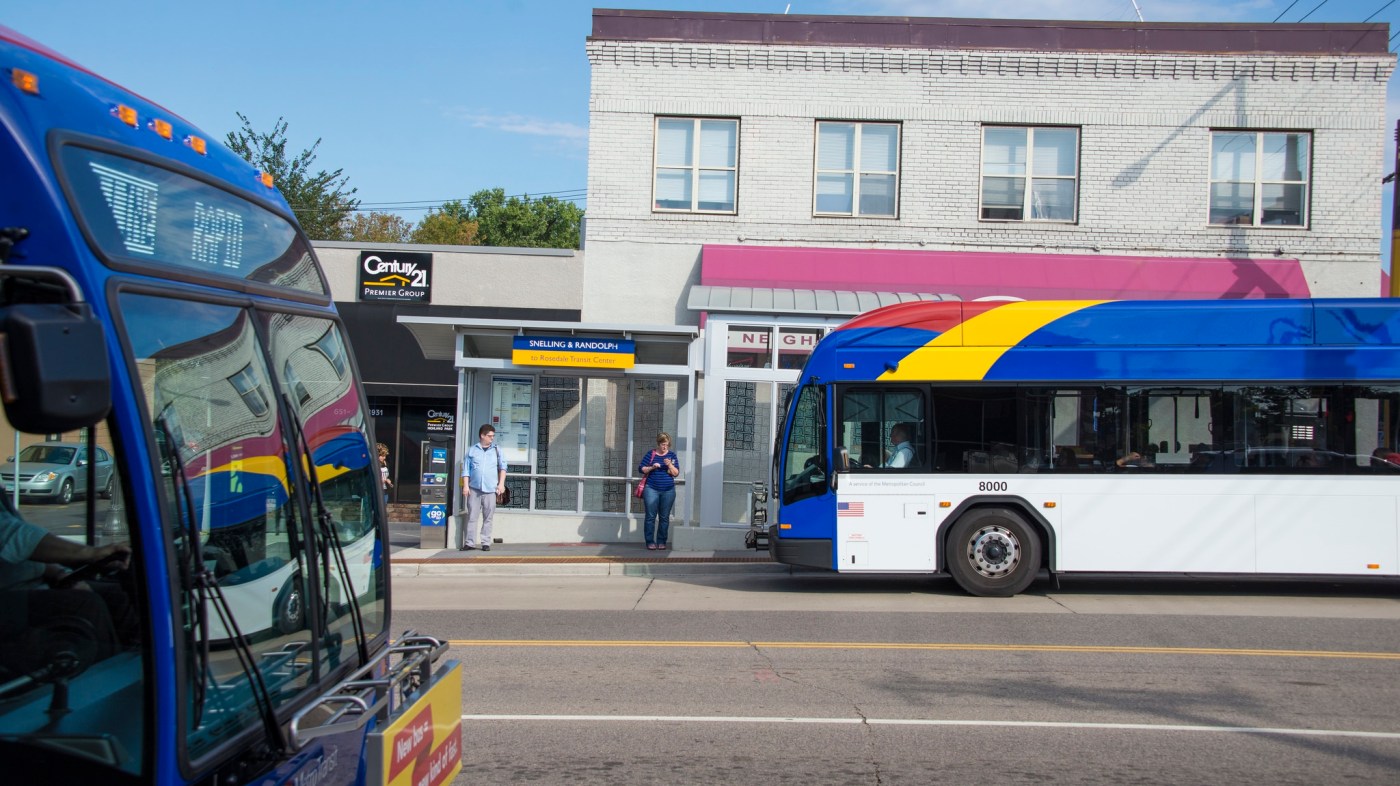
Metro Transit seeks to expand service by 35% through 2027
Metro Transit has debuted plans to increase its public transit services throughout the Twin Cities by 35% through the year 2027, largely by adding 20 new bus routes, expanding service on 65 existing routes and rolling out light rail trains every 10 minutes.
Plans call for on-demand mini-buses to provide shared-ride, “micro-transit” pick-up services in eight suburban communities, with the goal of improving links to traditional public transit. A two-year pilot program in North Minneapolis will be made permanent in October, with the goal of adding at least two new zones each year through 2027.
Those and other service improvements will be made possible by a .75 cent regional sales tax that took effect across the Twin Cities last October.
The tax, authorized by the Minnesota Legislature, is split 17% among the region’s counties and 83% to the Metropolitan Council, the seven-county metro’s regional planning agency. By statute, the majority of the Met Council’s sales tax proceeds are dedicated toward transit operations, maintenance and capital projects, though 5% goes toward walking, biking and other active transportation.
‘Network Now’
The Met Council, the 17-member appointed board overseeing Metro Transit, voted Wednesday to release the draft “Network Now” expansion plan for public comment through Nov. 15. The goal is to grow ridership, expand job access and better meet the region’s changing mobility needs, said transit authority officials in a written statement. That includes increasing the number of jobs accessible within a 45 minute public transit trip by 25%.
The expectation is that following staff revisions, the Met Council will adopt the plan in early 2025.
Metro Transit has been gradually expanding service as more operators and support staff are hired, and officials see a direct link with ridership growth. Through the end of July, ridership has increased about 9% compared to last year. Average weekday ridership is 142,067.
No frequency changes are planned for the Red Line, the bus from Apple Valley to the Mall of America in Bloomington, or the Northstar Commuter Rail. Certain bus routes — such as Route 825 and Route 854 from the Northtown Mall in Blaine to Minneapolis — will be discontinued. Route 261, an express route from the Shoreview Community Center to downtown Minneapolis, will also be discontinued.
Public feedback on the Network Now plan will be sought a variety of ways. The first public meeting will be held on Oct. 1 in Hopkins. For more information, visit metrotransit.org/network-now.
Micro-transit mini-bus shuttles, other proposed changes
Among the proposed changes:
• Four new bus rapid transit services — the Gold Line, B Line, E Line and G Line — and the southwest extension of the Green Line from downtown Minneapolis to Eden Prairie are scheduled to roll out by the end of 2027.
• Green Line and Blue Line light rail trains currently depart about every 12 minutes throughout the day, which would be increased to every 10 minutes under the plan.
• Among the 65 routes that will be expanded, 15 routes would have trips running at least every 15 minutes.
• The new Gold Line bus rapid transit corridor will connect Woodbury and downtown St. Paul by next spring. Micro-transit shuttle mini-buses will offer on-demand, curb-to-curb connections to the Gold Line at four suburban stations. Micro-transit shuttles will also connect to the Orange Line at Interstate 35W and 98th Street Station, and to the future Green Line extension in Minnetonka.
• The Route 54M branch between downtown St. Paul, St. Paul’s East Side and the Maplewood Mall will be replaced by new the Route 58. On weekdays and Saturdays, the route will offer increased frequency, departing every 15 minutes from midday through the evening.
• A new suburban route, Route 204, will replace the existing Route 64N in St. Paul, North St. Paul and Maplewood between the Maplewood Mall Transit Center and the Hillcrest shopping center at Larpenteur Avenue and White Bear Avenue in St. Paul.
• Route 219 will be restructured to operate every 30 minutes, with service extending into the evening, instead of every 60 minutes. It will no longer service Lydia Avenue and McKnight Road in Maplewood, 15th Street and Hadley Avenue in Oakdale, Hudson Boulevard in Landfall and the Sun Ray Transit Center in St. Paul. Instead, the route will be streamlined to operate along White Bear Avenue and County Road E in White Bear Lake, continuing along Minnesota 120/Century Avenue with a new southern terminus at Woodlane Station in Woodbury.
• The new Route 215 will offer alternative service along Lydia Avenue and connect 3M, The Heights (the former Hillcrest golf course), the Maplewood Mall and the Sun Ray Transit Center, where it will meet the Gold Line and other high-frequency bus routes.
• The new Route 221 will service Hadley Avenue in Oakdale and Landfall, connecting Tartan High School, the Bergen Plaza shopping center, Oakdale City Hall and the Greenway Avenue Station in Oakdale, where it will meet the the Gold Line.
• The former Route 223 will be restored by December 2027 along its previous alignment between the Rosedale Transit Center in Roseville and the Maplewood Mall Transit Center in Maplewood.
Related Articles
Letters: Now, review what rail should be in the Twin Cities. Here are some standards
Majority of Maplewood City Council now opposed to Purple Line BRT project
Riverview Corridor rolls to a close with no streetcar, and no bus
Eastbound Minnesota Hwy. 36 in Roseville, Little Canada to close this weekend
Q&A: Why the revamped Our Streets wants to help you re-imagine your freeway


